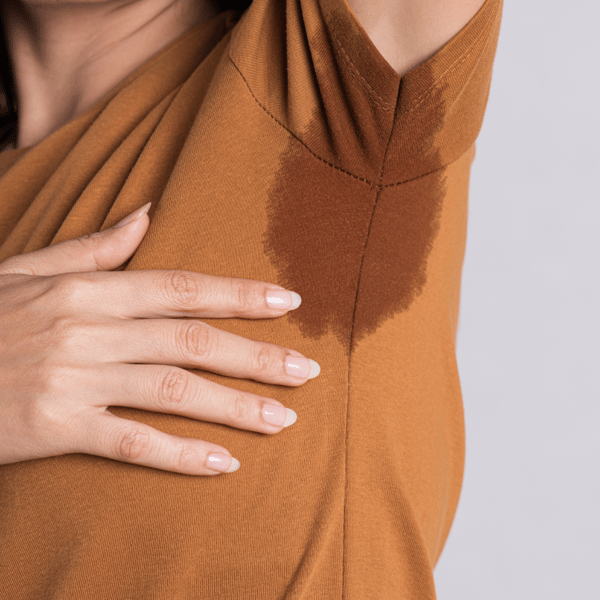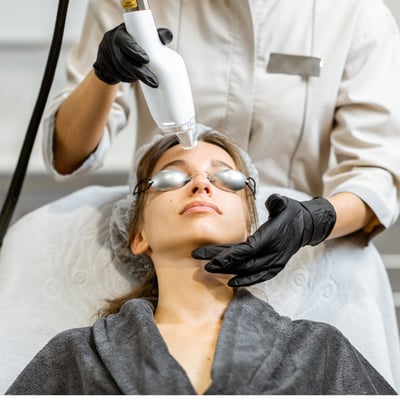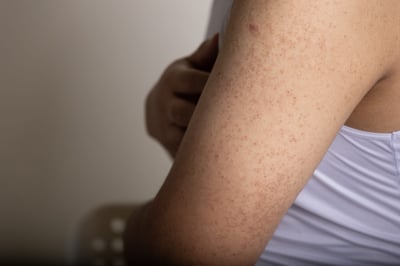
Everyone sweats. It’s the body’s way of regulating its temperature. But excessive sweating might be hyperhidrosis, the clinical name for overactive sweat glands. While hot weather or a brisk workout leaves some people glistening with a healthy glow, those with hyperhidrosis will be dripping in sweat. And some sufferers perspire heavily all the time. It doesn’t matter whether they’re hot or cold; exercising or sitting still.
Hyperhidrosis is not a dangerous health condition, but there are plenty of reasons to want to seek treatments for sweating too much. It can be uncomfortable, embarrassing, and can interfere with your daily routine. Luckily, Forefront has some proven methods to fight excessive sweat.
The science of sweat
Your body keeps your temperature steady by releasing moisture from eccrine glands in the skin. When this moisture—sweat—makes its way to the skin’s surface it evaporates, cooling you down.
Sweat from eccrine glands is odorless. Another gland—the apocrine gland— is responsible for smelly sweat. Apocrine sweat glands are located at the base of hair follicles. This is why areas like the armpits, groin, and scalp produce body odor when they sweat.
Hyperhidrosis is often hereditary. Other things that can make people sweat, whether they have hyperhidrosis or not include:
- Hot, humid conditions
- Physical activity
- Stress, anxiety, or fear
- Hot, spicy food
- Menopause
- Excess weight
- Allergic reactions
- Some medications
- Diseases (diabetes, hyperthyroidism, Parkinson’s, certain cancers)
Sweat glands are all over the body, but the most common body parts to perspire are the palms, soles of the feet, underarms, groin, forehead, upper lip, neck, and lower back.
How Much Sweat is Too Much?
Can you relate to any of these situations?
- You’re self-conscious about hugging, shaking hands, or getting too close to someone because you’re so sweaty.
- You constantly reach for a towel to wipe your face or neck dry.
- Sweaty hands make ordinary tasks like turning doorknobs or gripping tools difficult.
- You need to change out of sweaty clothes several times a day.
- Sweat stains have ruined items of clothing.
- You frequently have unpleasant body odor.
- It’s uncomfortable sitting in damp clothes.
- You’re prone to itchy, inflamed skin, or often get skin infections.
Everyone’s tolerance for getting sweaty is different. If you feel you have an abnormal amount of perspiration, wake up with night sweats, or sweat even without the normal triggers like nervousness, high temperatures, or exercise, it’s worth looking into—especially if these symptoms have developed suddenly. Your doctor can rule out any underlying conditions or diseases that could be causing the problem.
Suppose your excessive sweating is a nuisance and unrelated to a health problem, and you’ve exhausted the usual solutions like antiperspirants, wearing breathable clothing, and showering more often. The dermatologists at Forefront can help.
Treatments for sweating too much
The following are the most common treatments for hyperhidrosis:
1. Prescription antiperspirants
Antiperspirants stop the release of sweat by plugging pores with their main ingredient, aluminum salts. Clinical strength formulas are now available over the counter, but a dermatologist can prescribe something even stronger. Store-bought clinical strength products can decrease sweating by about 20% while a prescription has results closer to a 30% reduction.
2. Oral medications
A doctor may prescribe oral medication that interrupts the stimulation of sweat glands. These are usually most effective when combined with other treatments such as Botox® or miraDry®. Other medicines, such as beta blockers for anxiety can curb sweatiness by alleviating the underlying cause.
3. Botox® injections
Injecting Botox® under the arms, in the groin area, or anywhere where you experience excessive sweating will block the nerve impulses that stimulate the sweat glands. Patients who get Botox® for hyperhidrosis see a decrease in sweating of 82 to 87%. Treatment will need to be repeated, but it lasts four months to a year.
4. miraDry® Treatment
For many patients, treatment with miraDry® is a permanent solution to hyperhidrosis. A miraDry® applicator uses thermal energy to target and eliminate both eccrine and odor-producing apocrine glands. The underarms contain only 2% of the body’s sweat glands, so patients will still experience the necessary cooling effects of sweat elsewhere on their bodies. But the glands won’t regenerate, and there is an added benefit of decreased hair growth too. miraDry® results in an 82% decrease in sweating for most patients.
5. Liposculpture
You’ve probably heard of liposculpture for body contouring, but it can target sweat glands too. This minimally invasive procedure involves inserting a tiny hollow tube into the skin and using suction to remove the sweat glands—just as it does fat cells in other parts of the body. Like miraDry®, liposculpture is a way to fight excessive sweating for good.
6. Iontophoresis
Iontophoresis uses a machine to zap sweat glands with a mild electrical current. After several treatments, this blocks the glands’ ability to produce sweat. Treatment needs to be repeated every three to four weeks.
Don’t Sweat It—See a Forefront Dermatologist
You don’t have to live with excessive, persistent perspiration. Drier days are ahead at Forefront, where we offer treatment options that can stop your sweating for months at a time or even permanently. Our clinicians will find a hyperhidrosis solution that works for you and your lifestyle, with many locations offering Botox®, miraDry®, Liposculpture and more. Find a Forefront dermatologist near you today.





